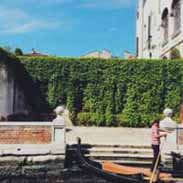Prehistoric Art Flashcards, test questions and answers
Discover flashcards, test exam answers, and assignments to help you learn more about Prehistoric Art and other subjects. Don’t miss the chance to use them for more effective college education. Use our database of questions and answers on Prehistoric Art and get quick solutions for your test.
What is Prehistoric Art?
Prehistoric art refers to all artwork produced before written records were kept. It includes ancient cave paintings, sculptures, and architectural monuments. Prehistoric artists used a variety of mediums including stone, clay, wood, and fiber. These works reflect the culture and beliefs of the people who created them.Cave paintings are one of the most famous forms of prehistoric art. These images were painted on walls in deep caves using natural pigments such as charcoal or ochre. The subject matter usually included animals that were important in the lives of these ancient people such as horses or bison. The purpose of these paintings is still being debated but it is believed that they served both spiritual and symbolic purposes for their creators. Sculptures also played an important role in prehistoric art. Carved stone figures depicting humans or animals have been discovered from this period around the world from Egypt to South America and beyond. These sculptures depicted gods or goddesses for religious purposes as well as representations of everyday life activities such as hunting or fishing. Architecture was another way that prehistoric peoples expressed themselves artistically through large-scale construction projects such as megaliths (large stones), tombs, temples, and cities like Çatalhöyük in Turkey one of the first known settlements dating back more than 9500 years. This type of architecture was often associated with religious ceremonies which suggests a strong connection between art and religion during this period in history Prehistoric art has been studied by scholars for centuries but it still holds many mysteries about its origins and purpose today. It is clear however that these works had great importance to their creators both spiritually and culturally which makes them unique examples of human expression going back thousands upon thousands of years.




















